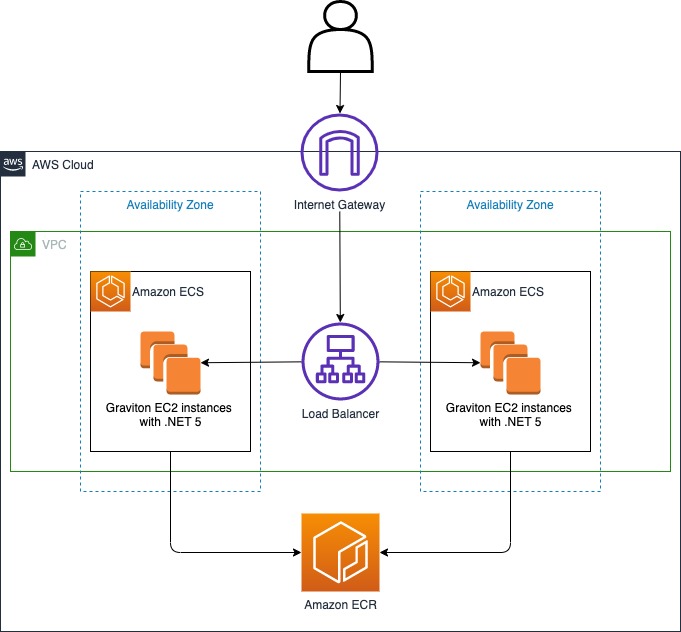AWS DevOps & Developer Productivity Blog
Category: Integration & Automation
Build and deploy .NET web applications to ARM-powered AWS Graviton 2 Amazon ECS Clusters using AWS CDK
With .NET providing first-class support for ARM architecture, running .NET applications on an AWS Graviton processor provides you with more choices to help optimize performance and cost. We have already written about .NET 5 with Graviton benchmarks; in this post, we explore how C#/.NET developers can take advantages of Graviton processors and obtain this performance […]
Best practices for developing cloud applications with AWS CDK
April 20, 2022: Updates are available in the Best practices topic of the AWS CDK documentation. The documentation is the most up-to-date resource going forward. In this post, we discuss strategies for organizing the development of complex cloud applications with large teams, using the AWS Cloud Development Kit (AWS CDK) as a central technology. AWS […]
Developing enterprise application patterns with the AWS CDK
Enterprises often need to standardize their infrastructure as code (IaC) for governance, compliance, and quality control reasons. You also need to manage and centrally publish updates to your IaC libraries. In this post, we demonstrate how to use the AWS Cloud Development Kit (AWS CDK) to define patterns for IaC and publish them for consumption […]
Automate thousands of mainframe tests on AWS with the Micro Focus Enterprise Suite
We have seen mainframe customers often encounter scalability constraints, and they can’t support their development and test workforce to the scale required to support business requirements. These constraints can lead to delays, reduce product or feature releases, and make them unable to respond to market requirements. Furthermore, limits in capacity and scale often affect the quality of changes deployed, and are linked to unplanned or unexpected downtime in products or services.
The conventional approach to address these constraints is to scale up, meaning to increase MIPS/MSU capacity of the mainframe hardware available for development and testing. The cost of this approach, however, is excessively high, and to ensure time to market, you may reject this approach at the expense of quality and functionality. If you’re wrestling with these challenges, this post is written specifically for you.
Building, bundling, and deploying applications with the AWS CDK
Learn how to perform application build commands as part of your AWS CDK build process by using the native AWS CDK bundling functionality.
Optimizing the cost of running AWS Elastic Beanstalk Workloads
AWS Elastic Beanstalk handles provisioning resources, maintenance, health checks, automatic scaling, and other common tasks necessary to keep your application running, which allows you to focus on your application code. You can now run your applications on Elastic Beanstalk using Amazon Elastic Compute Cloud (Amazon EC2). Spot Instances in both single instance and load balanced […]
Deploying applications at FINRA using AWS CodeDeploy
by Geethalaksmi Ramachandran (FINRA – Director, Application Engineering), Avinash Chukka (FINRA – Senior Application Engineer) At FINRA, a financial regulatory organization that oversees the broker-dealer industry with market intelligence, we have been utilizing the AWS CodeDeploy services to deploy applications on the cloud as well as on on-premises production servers. This blog post provides insight into […]
Setting up a CI/CD pipeline by integrating Jenkins with AWS CodeBuild and AWS CodeDeploy
In this post, I explain how to use the Jenkins open-source automation server to deploy AWS CodeBuild artifacts with AWS CodeDeploy, creating a functioning CI/CD pipeline. When properly implemented, the CI/CD pipeline is triggered by code changes pushed to your GitHub repo, automatically fed into CodeBuild, then the output is deployed on CodeDeploy. Solution overview […]







